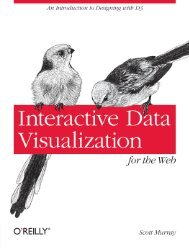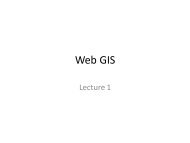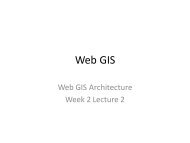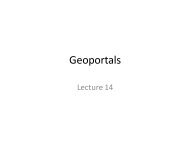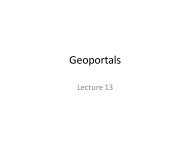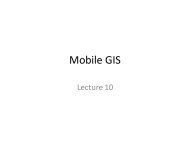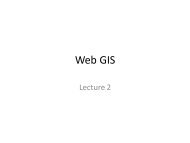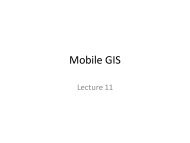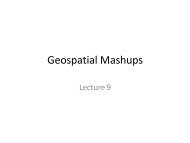geodesign-in-practice
- No tags were found...
Create successful ePaper yourself
Turn your PDF publications into a flip-book with our unique Google optimized e-Paper software.
help develop a conceptual model of key issues and management<br />
objectives. The conceptual model<strong>in</strong>g process beg<strong>in</strong>s with a<br />
verbal description of important relationships between the species<br />
of <strong>in</strong>terest and its environment. The verbal description is then<br />
used to help select a set of hypothetical drivers to be considered<br />
for <strong>in</strong>clusion <strong>in</strong> the model. The environmental variables (i.e.,<br />
covariates) and their relationship to the species of <strong>in</strong>terest (i.e.,<br />
response data) are referred to as a narrative model us<strong>in</strong>g a m<strong>in</strong>d<br />
map.<br />
One of the park's pronghorn antelope.<br />
(Photo courtesy of Hamilton Greenwood.)<br />
The Case of the Pronghorn Antelope<br />
A m<strong>in</strong>d map is a quick way to display potential factors affect<strong>in</strong>g variation<br />
<strong>in</strong> a focal species response, for example, the health and vitality of a<br />
population. The m<strong>in</strong>d map could be based on present-day data or legacy<br />
datasets, either of which helps visualize the narrative model, which can<br />
get rather complex. The narrative model will eventually be used to create<br />
a quantitative model to support statistical analytics, which occur later <strong>in</strong><br />
the workflow.<br />
For example, the Yellowstone pronghorn antelope (Antilocapra<br />
americana) faces a suite of risks characteristic of small populations<br />
with geographic/demographic isolation, low abundance, and low<br />
recruitment. Decision makers need a management plan based on<br />
demographic monitor<strong>in</strong>g of abundance, especially species vitality<br />
rates. This study focused on demographic monitor<strong>in</strong>g, especially<br />
recruitment and survival; ecological <strong>in</strong>teractions, especially<br />
predation rates and recruitment; and habitat assessment.<br />
Geodesign <strong>in</strong> Practice: Design<strong>in</strong>g a Better World<br />
J10221<br />
Where the Wild Th<strong>in</strong>gs Are <strong>in</strong> Yellowstone Park<br />
22




